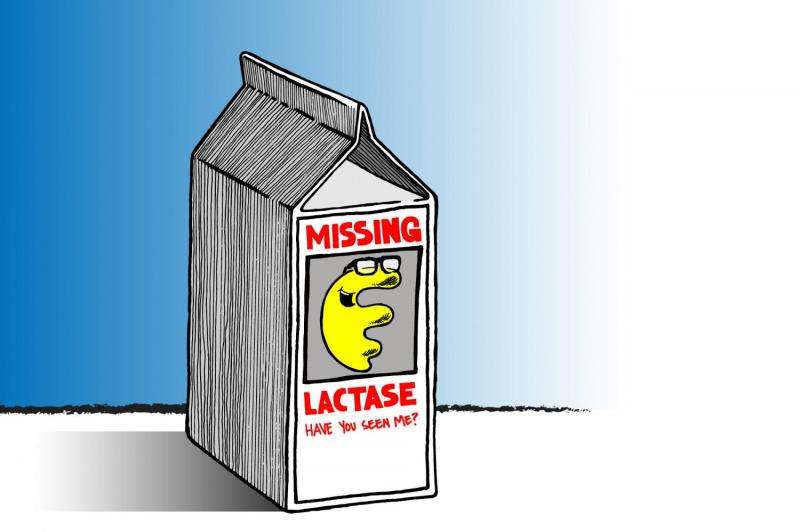Credit: Christ-Claude Mowandza-Ndinga/UNC Health Care
For most of us, lactose is one of the first things that we consume – whether in the form of breast milk or formula. But as we age, our bodies express less and less of the enzyme lactase that helps our bodies break down the lactose in milk and other dairy products. Around 75 percent of the global population will eventually develop lactose intolerance.
Researchers led by Andrea Azcarate-Peril, PhD, assistant professor of medicine at the UNC School of Medicine and director of the UNC Microbiome Core Facility, and Todd Klaenhammer, PhD, Distinguished University Professor & William Neal Reynolds Distinguished Professor at the NC State Department of Food, Bioprocessing & Nutrition Sciences, have just released a study on lactose intolerance and the gut microbiome in the Proceedings of the National Academy of Sciences. They found that a prebiotic – a nondigestible food ingredient that promotes the growth of beneficial microbes in the gut – could become a staunch defense against lactose intolerance.
The PNAS study examined the gut microbial composition of lactose intolerant subjects, who consumed the prebiotic galactooligosaccharide (GOS) for 35 days to investigate whether or not changes to the gut microbiome occurred during treatment with GOS and subsequent exposure to dairy products.
"I have been working with probiotics and prebiotics for over 20 years, and this is the first time that I'm aware of that a prebiotic is going through the rigor of a pharmaceutical level clinical trial in a specific disease state," said Azcarate-Peril.
When we are infants our bodies express an abundance of the enzyme lactase to help us break down the lactose in breast milk. But over time, the amount of lactase expressed by our bodies decreases, leading to uncomfortable abdominal symptoms when milk is consumed. To overcome this intolerance, researchers focused on the community of commensal lactose metabolizing bacteria that reside in the colon. The idea is that by increasing these specific bacteria in a targeted fashion, we can rely on them to metabolize lactose independent of our body's own enzymes.
For 35 days of the study, participants at two sites were given doses of highly purified galactooligosaccharide (RP-G28) or a placebo while being asked to refrain from consuming dairy. This initial phase of the study enabled the subjects to avoid symptoms of lactose intolerance, while re-shaping the microbiota to increase the bacteria that metabolize lactose. This set the stage for reintroduction of dairy without the painful and uncomfortable symptoms exhibited in lactose intolerant subjects.
"The prebiotic preconditioned changes in the microbiota," said Azcarate-Peril, who is the study's first author. "In most cases, the bacteria that can metabolize the prebiotic are there, but there are so few of them that they cannot fully metabolize sporadic and heavy doses of lactose."
After 35 days, when the gut had been adequately conditioned, participants were asked to consume dairy for 30 days. Fecal samples were taken from study participants over the course of the study to determine changes to the gut microbiome. Abdominal pain was reduced by 70 percent among those who consumed the prebiotic and 90 percent showed a significant increase in lactose fermenting bifidobacteria, known as a bifidogenic response.
The next steps in bettering our understanding of using prebiotic GOS to treat lactose intolerance are currently underway. Treatment of 377 patients in a Phase 2b/3 trial was completed in late 2016 and additional data is expected in 2017 to both broaden the sample size and take a deeper look at what changes occur to the microbiome by consumption of prebiotics GOS and dairy products, and how durable those changes are over time.



















